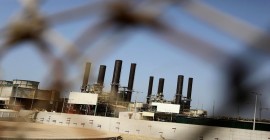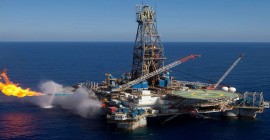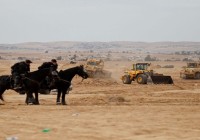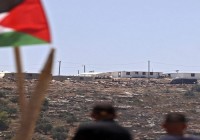PMA Business Cycle Index improved in West Bank, declined in Gaza Strip in June 2016.

The PMA has released the results of its Business Cycle Index (PMABCI) for June 2016. The results revealed that compared to May 2015, Palestine's overall index remained relatively stable, with conflicting regional trends: improving in the West Bank (WB), and declining in Gaza Strip (GS). In sum, the overall index marginally picked up to around 10.5 points during this month, compared to 10.0 points during last May.
In the WB, the index rose again exceeding its level in the previous month, and scoring a new peak in over a year at around 24.9 points, compared to around 20.4 points last May. This increase was supported by improvement in most industrial sub-sectors' indices, particularly for food (from 5.4 points to 6.4 points), furniture (from 4.0 points to 6.4 points), and engineering (from 1.4 points to 3.8 points). In addition, there was also a relative improvement in the sub-sectors of leather, chemicals and pharmaceuticals, construction, and traditional industries. This improvement is manifested mainly in higher sales level during June, accompanied by declining inventory. Moreover, industrial firms' owners continued to show higher optimism regarding both expected production and employment in the near future.
In contrast, the highly volatile Gazan index witnessed another sharp drop to –25.2 points, compared to -19.2 points in May 2015. This drop resulted from a noticeable decline in the indices of the main industrial sub-sectors, specifically food (from 0.0 points to -9.3 points), and textiles (from 0.0 points to -6.8 points). Moreover, the subsectors' indices for paper, chemicals, and plastics have all marginally declined, while the indices for the remaining industrial sub-sectors improved in varying degrees.
The decline in the Gazan index resulted from the drop in production and sales, and a rise in the accumulated inventory. Those developments reflected a worsening short-term outlook among industrial firms owners, which resulted in negative forecasts for future production and employment. It is worth mentioning that except for June 2015, Gaza's index remained in the negative range for more than two consecutive years, in addition to its deterioration this month to the lowest value since the Israeli attack on GS in 2014. All of this reflected the dire and worsening political and economic conditions in the Strip as the culprit factors persisted. Thus, supplies of raw materials, electricity and fuel remained deficient; and prolonged delays in reconstruction efforts, lifting the Israeli blockade, and opening the Rafah border crossing continued.
It is also noteworthy that the PMABCI is a monthly index, which aims to capture the state and evolution of economic activity in Palestine by tracking the performance of the industrial sector, especially fluctuations in production and employment levels and their implications for the economy at large. The maximum value of the PMABCI is positive 100 point, while the minimum is minus 100 point; a positive value indicates favorable economic performance, while a negative value indicates bad performance. On the other hand, a value close to zero indicates that economic performance did not change and is unlikely to do so in the near future.





